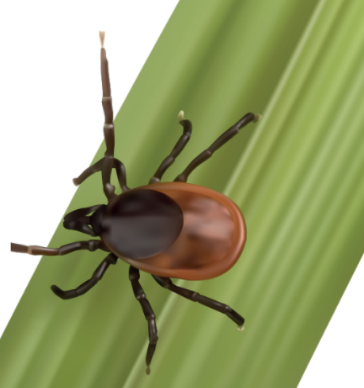RI Department of Health confirmed a case of tick-borne Powassan in a Providence County who is now recovering. The best way to prevent tick-borne illnesses is to remove them quickly and correctly.

TickEase Tweezers meet CDC requirements and are a great tool to have handy this season. Can I send you a pair of TickEase tweezers to field-test?
Tick Population Increases; Know How to ID and Remove Ticks Properly
The CDC reported a 45 percent uptick in Lyme disease cases from 2005 to 2018 according to a February 2021 report. This year is predicted to be a mast year and an abundance of food for tick-carrying animals means continued growth of the tick population. With tick-borne illnesses being the fastest-growing vector-borne infectious diseases in the world*, prompt and proper tick removal is a critical step in preventing infection.
To identify the tick type and determine if illnesses could be an issue, the website www.tickencounter.com, includes photos to help determine next steps as some are more dangerous than others. Or, you can upload a photo of the tick and the TickSpotters service will email you within 24 hours.
There are only a few species of ticks that can transmit the Lyme-causing bacteria. Blacklegged (also referred to as the Deer tick) and Western Blacklegged ticks are the biggest offenders.
Other species of ticks can carry many diseases as well.
While some studies suggest Lyme transmission can take 24 to 72 hours after attachment, there are many other infections that you can get with varying transfer times.
Powassan, a rare, severe disease causes headaches, vomiting, fever, and may take as little as 15 minutes to contract and have recently infected humans in Maine and Rhode Island.
What to do if bitten by a tick…
It is important to dislodge embedded ticks from the skin’s surface as soon as possible to minimize the effects of the bite.
Use a fine-tipped tweezers such as the TickEase, a CDC guideline compliant 2-sided tweezer for human and pet tick removal www.tickease.com. Made from stainless steel it removes all sizes and types of ticks and can be heat sterilized.
Steadily grasp the tick; using the tweezers take hold of the tick as close as possible to the skin’s surface and pull upward in a steady motion.
DO NOT twist the tick as may cause the tick’s mouthparts to remain embedded in the skin. Suffocation with Vaseline, fingernail polish, dish soap and cotton, and using a hot match can be dangerous and ineffective.
Use rubbing alcohol or hydrogen peroxide to clean the bite area and tweezers when done.
It is important to save the tick in a zip-loc bag for identification and testing. Remember a diseased tick does not necessarily transmit illness.
Call your doctor if…you experience flu-like symptoms such as fever, headache, muscle or joint pain, stomach issues or a target-shaped rash that can develop in three to 30 days. If bitten by a tick in an area where Lyme is prevalent, a physician may prescribe a precautionary dose of antibiotics to reduce the risk of getting infected.
REQUEST PRODUCT SAMPLE FOR REVIEW
If you would like to field-test a TickEase tweezer for review, please email
* http://lymediseaseresource.com/Lyme_Disease_is_fastest_growing_disease.htm
